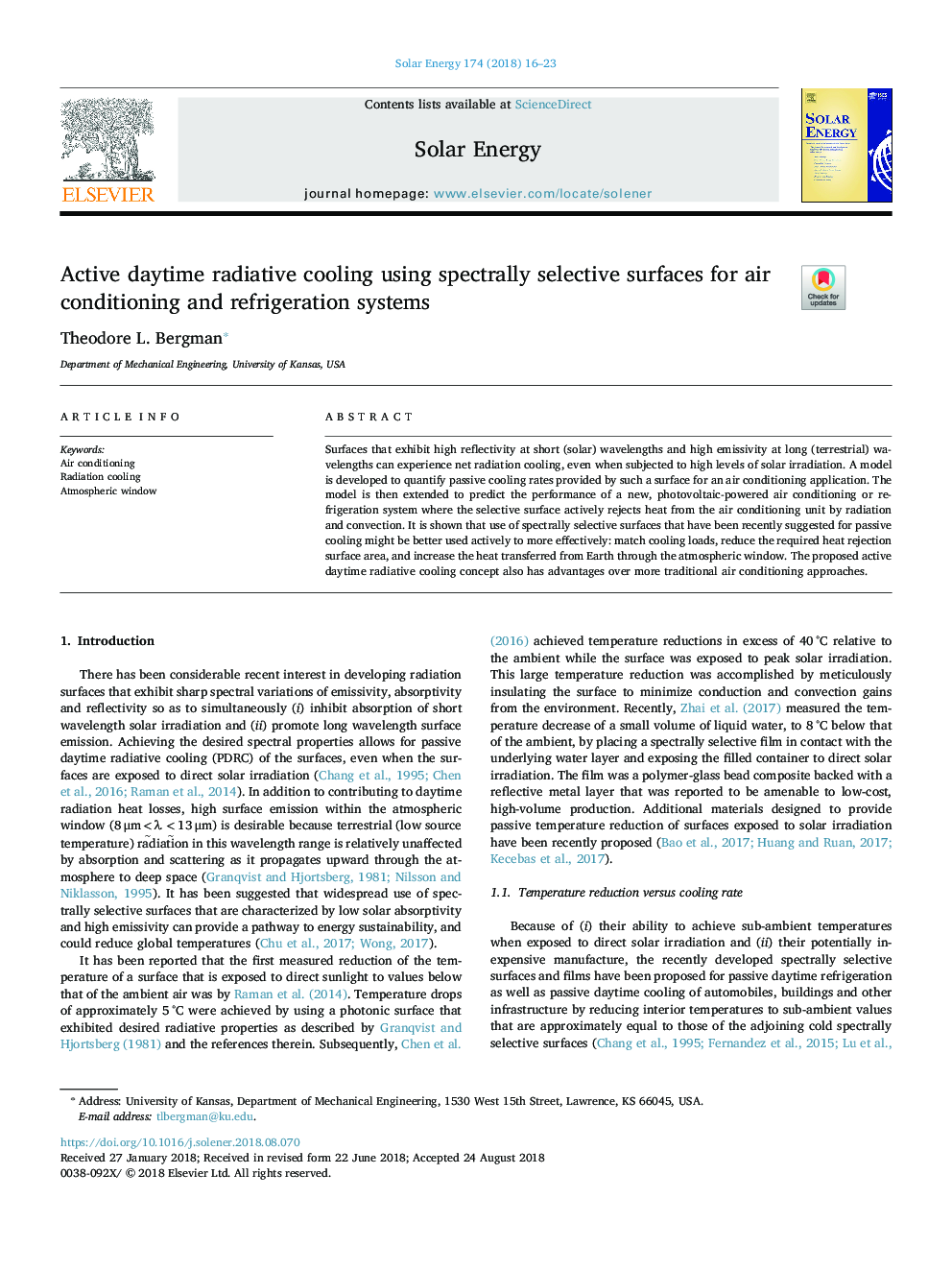| Article ID | Journal | Published Year | Pages | File Type |
|---|---|---|---|---|
| 8955386 | Solar Energy | 2018 | 8 Pages |
Abstract
Surfaces that exhibit high reflectivity at short (solar) wavelengths and high emissivity at long (terrestrial) wavelengths can experience net radiation cooling, even when subjected to high levels of solar irradiation. A model is developed to quantify passive cooling rates provided by such a surface for an air conditioning application. The model is then extended to predict the performance of a new, photovoltaic-powered air conditioning or refrigeration system where the selective surface actively rejects heat from the air conditioning unit by radiation and convection. It is shown that use of spectrally selective surfaces that have been recently suggested for passive cooling might be better used actively to more effectively: match cooling loads, reduce the required heat rejection surface area, and increase the heat transferred from Earth through the atmospheric window. The proposed active daytime radiative cooling concept also has advantages over more traditional air conditioning approaches.
Related Topics
Physical Sciences and Engineering
Energy
Renewable Energy, Sustainability and the Environment
Authors
Theodore L. Bergman,
